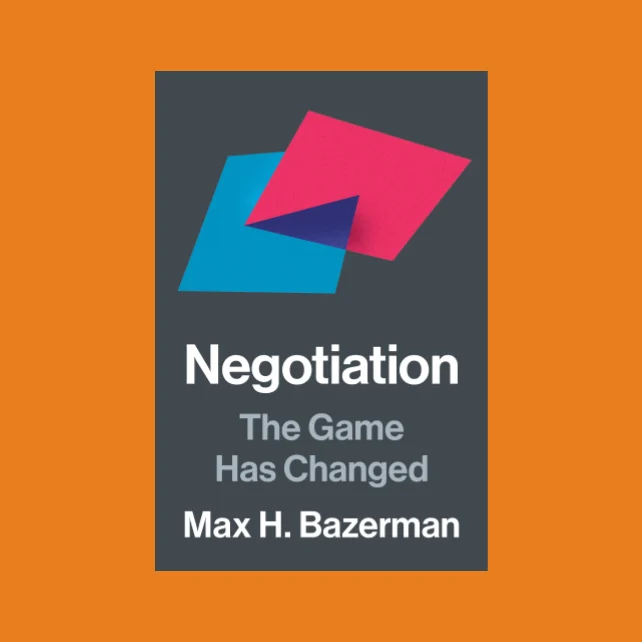The following is an excerpt from Chapter 10 of Negotiation: The Game Has Changed, written by Max H. Bazerman, the Jesse Isidor Straus Professor of Business Administration at Harvard Business School, and published on Jan. 14, 2025 by Princeton University Press.
How else might a negotiator who wants to be fair deal with an unreasonable opponent? Our answer came from my early research on how different forms of arbitration in labor relations affect negotiator behavior.
The most common form of arbitration resembles an efficient judicial decision, where two parties make their cases to a neutral third party, who reaches a binding decision about what constitutes a fair resolution. In the 1960s, labor relations scholar Carl Stevens argued for settling disputes through final-offer arbitration—also known as “baseball arbitration” because of its use in Major League Baseball (MLB) salary disputes.
The riskiness of the process drives the parties toward agreement, which dramatically raises settlement rates.
The unusual feature of final-offer arbitration is that the arbitrator receives final offers from both parties and must pick one or the other, and not a compromise between the two. You might wonder why you would want to limit the arbitrator to selecting between two potentially unreasonable final offers. The benefit of final-offer arbitration is not that it improves the arbitrator’s decision but that it changes the negotiators’ behavior.
In conventional arbitration, negotiators’ offers often remain far apart because they expect the arbitrator will simply split the difference between them. If that is an accurate prediction of arbitrator decision-making, then the more unreasonable one’s offer is, the better one fares. Not allowing the arbitrator to split the difference between two offers neutralizes any incentive the disputants may have to be unreasonable, since the arbitrator is unlikely to choose the less reasonable offer.
In contrast, final-offer arbitration rewards parties for being more reasonable. Thus, each party competes to submit a more reasonable offer than the other side. The riskiness of the process drives the parties toward agreement, which dramatically raises settlement rates. Results from MLB arbitration support this logic. Teams and players often file to go through the formal final-offer arbitration process, then as the arbitration hearing approaches, the parties make reasonable concessions and usually settle before the arbitration hearing occurs.
In 2022, for example, the New York Yankees and their superstar Aaron Judge filed for arbitration. As part of the arbitration process, Judge submitted a final offer of $21 million for the 2022 season, while the Yankees submitted a final offer of $17 million. But, before an arbitration decision was made, the parties agreed to a $19 million contract that would allow Judge to earn two $250,000 bonuses, one for winning the American League Most Valuable Player award and the other for receiving the World Series Most Valuable Player Award. He was the American League Most Valuable Player in 2022, but the Yankees did not make it to the World Series.
The final-offer arbitration challenge changes the game by signaling an honest belief in the fairness of your offer and potentially nudging an adversary out of their unreasonable position. This strategy comes with a few complications that should be noted. First, many opponents will be surprised by the idea, as they probably have never received such a proposal before. In addition, before making the challenge, you will need to be sure you aren’t the more unreasonable party, since you would then likely lose the arbitration if one occurred.
From Negotiation: The Game Has Changed, by Max H. Bazerman. Published by Princeton University Press and reprinted here by permission.


